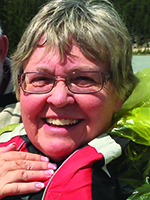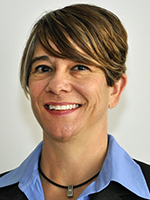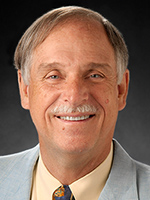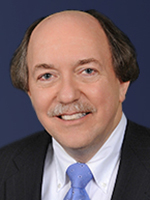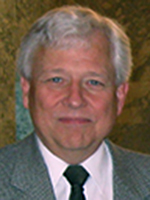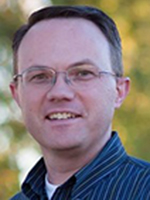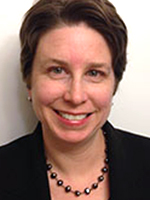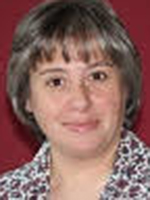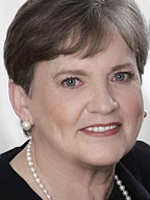2017 ASA Board of Directors Candidates
The ASA announces the selection of candidates for the 2016 election. The winning candidates’ terms will begin in 2017. Make sure to look for your ballots in your email inbox and vote early. Voting begins at 12:01 ET March 15 and ends at 11:59 p.m. PT on May 1. Read the complete candidate biographies (PDF).
President-Elect
Mary Batcher, Ernst & Young (Retired)
Statistics has been exciting to me ever since I discovered it in my undergraduate research methods class at Michigan State University. Statistics provided tools to tease out the secrets hiding in data. It gave me a career path I love, and I have never looked back.
My career and family have grown together, as my four sons were born while I was in college and graduate school. I worked in both government and private sectors, but have always served the profession through the ASA. I hope to continue to serve as ASA president.
The world is different now than when I began my career. We are a large and diverse community, with varied social and statistical backgrounds, interests, and points of view. We need to make sure all our voices can be heard. As ASA president, I am ready to make that happen.
I describe here three challenges and opportunities our profession faces and then the initiatives I would pursue as president.
Big Data Revolution
Computer scientists and other Big Data specialists have caught the attention of our customers and the media. The opportunity for us is to help them understand the value we bring with our understanding of the underlying structure of data, the inter-relationships among variables, the patterns of missing information, and a host of other factors that we routinely deal with.
A Statistically Literate Population
The inclusion of statistics courses in the curriculum of nearly every college major and the new focus on statistics in the K–12 curriculum present many opportunities for our profession. Universities can take the lead in training math and other teachers in the methods recommended in the ASA’s report Statistical Education of Teachers (SET).
Federal Statistics
Government, because it is subject to legislative oversight, is risk averse and under pressure to do more with less. Some level of carefully considered risk-taking is needed to continue to produce high-quality statistics within resource limitations. An example of such informed risk-taking is the Census Bureau’s recently announced plans for a wider use of administrative records for the 2020 Census.
ASA Initiatives in This Emerging World
The ASA should reach out to the business community through nontechnical articles to help them understand the complexity of dealing with massive data. The ASA can increase its assistance to classroom teachers with material and approaches that support the statistical thinking described in the ASA’s SET report. The ASA can help academic statisticians implement the approaches to statistical training for nonstatisticians described in the SET report. The ASA should continue to address policymakers on matters that affect the quality of federal statistics.
You may be wondering how my career prepares me to lead the statistical profession.
My Professional Career
My professional career began in the federal government at the National Center for Education Statistics, where I started to appreciate the difference between the sanitized examples in textbooks and real data, in all its messiness.
In 1997, after nine years in government, I moved to the Big 4 accounting firm Ernst & Young, where I started a statistics practice. The group was small in the beginning, with less than $100,000 in annual revenue; but, in the last year I was there, we were able to bring in more than $6 million.
I recently retired to start my own statistical consulting company. This has allowed me to stay active in statistics and continue to serve the profession.
My Service to the Profession
My ASA service began in the Washington Statistical Society, where I was president after serving in several other roles. I have taken on other ASA roles, including chair of the Council of Chapters, member of the program committee, and JASA associate editor. I am currently the chair of the board of trustees for the National Institute of Statistical Sciences and hope to continue my professional service as ASA president.
President-Elect
Lisa LaVange, Office of Biostatistics in the Center for Drug Evaluation and Research at the U.S. Food and Drug Administration
Statisticians conduct high-quality research to address questions critical to the public interest. We train the next generation to do the same and make sure other scientists, political leaders, and the public know what they need to act intelligently and make the right decisions. In short, we research, we teach, we inform.
Throughout my career, I’ve focused on public health and medical research, but statistics has a far wider reach, from climate change to economic forecasting to social science and policy research. Whatever the field, our contributions are important, and strengthening our profession is our responsibility. I am honored and excited to be running for ASA president! The initiatives I would undertake reflect my experience and my passion for our profession.
Promoting Sound Statistical Practice Everywhere
During my 30 years in medical research, I’ve seen an alarming increase in the number of individuals considered expert in clinical studies who lack statistical training, many with a good understanding of the how, but not the why. This trend parallels the growth of data science. We have declared the ASA to be “The Big Tent for Statistics” while acknowledging that many disciplines participate in the quantitative sciences arena. Are the players equipped with skills and understanding to search sensibly and interpret wisely? Our job is to make the answer a firm “yes.”
New ASA guidelines strengthen our curricula. We can continue to refine these as new data sources emerge, search algorithms become faster, and areas of interest evolve, while also ensuring that statistics users have access to sound, practice-based training and reliable software—and know when to call a statistician for help!
Promoting Excellence in Communication and Informed Public Discourse
Our discipline relies on understanding complex concepts, applying them with scientific rigor, and being able to explain what we did. Excellence in communication is essential to procure funding and ensure research is held to a high standard and results are disseminated responsibly. We cannot hope to move science forward if we fail to carry our points with others. The ASA has stepped up its involvement in public affairs, as evidenced by the p-values and significance policy initiative and by letters endorsing key public figures. I look forward to expanding our reach even further.
Attracting the Best and the Brightest Through Mentoring
Our popularity is on the rise, but we can do more. Initiatives to attract students early in their studies can be enhanced. We are a diverse group with global representativeness, and embracing this diversity enhances our profession. Our leadership should reflect our demographics, and we need more statisticians to volunteer for mentorship. Our students should be exposed to ethical guidelines, negotiation skills, and teamwork. If courses are not available, role models should be.
Equipping Statisticians to Be Leaders
I have had the good fortune to teach UNC’s inaugural course in statistical leadership and to practice leadership in multiple sectors. Our graduates become department chairs and organizational unit heads. We must equip them with the skills they need to lead effectively.
Teaching leadership is one dimension; being willing to assume it is another. Statisticians are trained in logic and problem-solving, so who better to lead multi-disciplinary groups in strategic planning and decision analysis? More and more, statisticians are stepping up to lead not just statistics teams, but entire research programs; we are serving as college deans and presidents of firms.
ASA initiatives can help train new and support existing leaders among our ranks. ASA presidents should have a broad understanding of the diverse needs and interests of statisticians. My experience in industry, academia, and government provides a unique perspective on common areas of concern and ways to address them. I look forward to joining you on our journey!
Vice President-Elect
Nancy Bates, U.S. Census Bureau
I am grateful and humbled to be nominated for the position of ASA vice president. I have been a member of the organization since the late 1980s and have the utmost respect for the board members, association employees, and many volunteers who keep the ASA at the forefront of our profession.
Beyond serving in a support role and a resource to the president, president-elect, and executive board members, I have no immediate initiatives to promote. However, if elected, I do have two areas I believe are important for the board to consider.
First, I am concerned about the recruitment (and subsequent retention) of younger members. Having served on the executive council of the American Association for Public Opinion Research, I am aware of how difficult it has become to keep young professionals as long-term members. Membership attrition is a challenge, but if the ASA wants to grow and diversify, then finding ways to engage students and young professionals is critical. If I am elected to the board, I will spend time talking to membership experts and the Committee on Retention and Recruitment about new techniques the ASA might consider to boost and keep this cohort in the ASA fold.
Second, as a longtime government employee, I am interested in seeing increased collaboration between academic institutions and the federal statistical community. Agencies that comprise the federal statistical system deal with a variety of interesting challenges that ASA members are well equipped to address. Many of the ASA sections and committees are built around topics central to the missions of statistical agencies, including survey methods research; privacy and confidentiality; statistical computing; data mining; and government, business, health, and education statistics.
The SPAIG (Statistical Partnerships among Academe, Industry, and Government) Committee aims to encourage, initiate, and reward collaborative efforts across academe, industry, and government. This is a good vehicle to launch joint projects between principal investigators, students, and government statisticians in a win-win situation whereby agencies are exposed to cutting-edge science and academe are provided real-world problems in an environment where they can prove-in innovations.
As the Census Bureau coordinator for the National Science Foundation/Census Research Network, I have seen first-hand how valuable such collaborations can be. I would love the opportunity to work with the ASA to expand these types of activities.
In closing, I welcome the opportunity to run for a position on the ASA Board and look forward to the election outcome. Above all, I encourage all members to vote (for me or my opponent)!
Vice President-Elect
G. David Williamson, U.S. Centers for Disease Control and Prevention
It’s not location, location, location. It’s communication, communication, communication! Upon reviewing the ASA’s priorities and the statistics profession’s challenges and opportunities, I am struck that each issue can be addressed more effectively with enhanced communication fostering stronger participation from our profession’s membership. Although importance and timeliness may shift priorities, the following ones are most important for the ASA/our profession:
Enhance value of membership in the ASA and statistics profession. To recruit/retain members, the ASA must increase its value by enhancing personal relevance of what the ASA offers. We should activate the next generation in the statistics profession and the ASA by demonstrating that the ASA is the best place to maintain and enhance statistical skills (e.g., via ASA courses taught by the best leadership in statistics). We should empower new students and members by engaging them in ASA committees and including them in planning activities focused on their needs. Also, we can focus on specific needs of applied and isolated statisticians and other sects of our profession by developing meeting within meeting and other venues for discussion and collaboration, as well as by enhancing SPAIG activities.
Increase literacy for effective statistical impact. This includes development, understanding, and application of theoretical/applied statistical tools, policy and communication skills (to work with the media, Congress, and the public), and other organizational leadership skills (to effectively make decisions based on statistics). The ASA’s training/education activities can be augmented with more emphasis on policy, communication, and leadership at JSM, focused regional meetings, and locally offered ASA courses. Academia can develop courses in these areas for well-rounded training and contextualizing how that training translates into more successful application to broaden the impact of statistics.
Proactively participate in Big Data/data analytics development. The foundation for Big Data is statistics because it envelops all aspects of data, beginning with formulating study questions. We can strengthen the role of statistics in Big Data by networking and collaborating more effectively with experts from other disciplines and demonstrating how statisticians’ skills benefit the evolving nature of Big Data (e.g., by offering academic and ASA courses). Should we focus on theoretical developments for Big Data, as statisticians did in the small sample arena, or explore the idea of a new journal in the Big Data field, perhaps under the ASA umbrella and leadership, and involving other disciplines?
Our profession’s issues are complicated, and they require leaders experienced in science and administration of complex organizations. My scientific experience in environmental and public health research includes directing difficult, elaborate initiatives such as development and implementation of the World Trade Center Health Registry. This—teamed with my experience in overseeing JSM, other committee/task force work for the ASA, supervising as many as 80 scientific staff, and managing annual budgets of $25-40 million—have positioned me well for the scientific and administrative requirements of vice president of the ASA.
The issues above are not easy ones to solve, but the ASA is a diverse organization comprised of gifted thinkers and doers, and we as a profession have taken steps to move statistics forward. I would be honored and welcome the opportunity to serve as your vice president to continue our progress. I would continuously seek your guidance and work through enhanced engagement within the statistics community and with our partners from other disciplines to place statistics in a leadership role for effectively contributing to the betterment of society. And we can do this together through communication, communication, communication.
COSGB Representative to the Board-Elect
John Czajka, Mathematica Policy Research, Inc.
I would be honored to serve as one of the Council of Section’s representatives to the Board of Directors. As a recent chair of the Council of Sections, an earlier vice chair, and a former officer in three sections, I believe I am well prepared to represent the sections on the ASA Board of Directors.
Under the first of two themes, the ASA as “The Big Tent for Statistics,” the ASA s strategic plan expresses a concern that the ASA does not serve the needs of applied statisticians … and other nonacademic groups as well as it could. In addition, students account for a disproportionate share of the total membership of the ASA, but too often leave the association after graduation.
Establishment of the Conference on Statistical Practice was an important step in increasing the ASA’s offerings to nonacademic statisticians, including former student members. One of my priorities as a member of the board of directors would be to expand the ASA’s efforts to gain and retain members from these communities without weakening our strong academic membership.
Under the second theme of increasing the visibility of the profession, I strongly support the ASA’s efforts to have an impact on policymaking. The ASA’s initiatives in this area include the preparation of white papers, advocacy in support of the federal statistical system and major research budgets, the release of policy statements, and the development of resources for policymakers. As a participant in this arena professionally, I would work as a board member to expand and enhance these activities.
As one who has been active in sections from early in my membership, I am puzzled that fewer than half of the ASA’s members belong to sections. We need to understand why this is so and how the actions of the board and the Council of Sections affect section membership. For starters, I would work with the ASA to determine how we could enhance our membership data. On more than one occasion during my time on the COSGB, our efforts to answer fundamental questions about section membership were hindered by the state of the ASA’s data on its members. For example, we cannot determine how new sections affect the number of ASA members who are section members, a question posed repeatedly when new groups apply for section status. If we as an association aspire to leadership in the application of statistics to science, government, and business, we can certainly apply sound statistical methods within our own organization.
COSGB Representative to the Board-Elect
Jim Lepkowski, University of Michigan
The ASA Board of Directors has operated for a number of years recently under a strategic plan that has allowed it to formulate new policy and adapt to a rapidly changing statistical landscape. I do not see a need to revise or develop anew a strategic plan for the organization. But during my service on the Council of Sections, I saw firsthand the pressure on the overall organization to increase opportunities for the presentation of papers, short courses, and other activities at the annual Joint Statistical Meetings. The council was and is under pressure to add new sections that will allow specialization in statistics to be more completely represented at JSM. The JSM pie is not growing, but the slices are getting thinner and thinner each year.
If elected to serve as a Council of Sections Representative to the Board, I would hope to encourage discussion and study of the pressures on JSM as our organization order ativan online no prescription becomes more diverse statistically. New policy may be needed to limit the number of sections, add satellite meetings to JSM, add meetings at other times of the year (such as the successful winter meetings on statistical practice), and to develop other ways to allow the ASA to continue to thrive.
As a member, I have also seen how the board has begun to address the pressures on the statistical community more broadly to respond to Big Data and data science initiatives. Having been part of initiatives to make survey methodology more prominent as a field, I would hope to contribute to ongoing discussion and development in these areas.
COCGB Representative to the Board-Elect
John Stevens, Utah State University
When I think about why I joined the ASA 12 years ago, and why I have remained a member, it is largely because the ASA is such an active, energetic organization. A good deal of that action and energy is seen through the vitality of the local chapters of the ASA. It has been my privilege to serve in my local chapter as well as on the Council of Chapters Governing Board the past few years, where I have interacted with many dedicated ASA members who are working to support the ASA’s mission.
The ASA’s mission is summarized in its current strategic plan, with two main themes: The ASA as “The Big Tent for Statistics” and Increasing the Visibility of the Profession. The various initiatives undertaken by the ASA, including annual presidential initiatives, stem from these themes.
The chapters of the ASA present a natural setting to implement many aspects of these initiatives at the local level. The board of directors regularly reviews, updates, and acts on the ASA Strategic Plan, including approving and maintaining various initiatives. If elected as Council of Chapters representative to the board, I would work to translate the ASA Strategic Plan and associated initiatives into chapter-relatable actions. As part of this work, I would encourage all ASA members to become more active collaborators in their respective institutions and fields of specialty, rather than sitting back as qualified resources just waiting for the call. Such proactive collaboration helps us see the newer problems coming up, so that statisticians can lead the direction of work, rather than simply reacting to it.
That spirit of proactive collaboration can be applied to the ASA Board of Directors, as well. The board makes occasional, official statements, focusing on timely statistical issues relevant to the ASA Strategic Plan (such as the recent statement highlighting the role of statistics in data science). As a member of the board, I would work to ensure that the board continues to take up relevant issues and have drafted concise statements that are effectively communicated to relevant societies, agencies, policymakers, media outlets, and industries. In addition, I would work to help chapters see how they can act on these board statements at the local level. In this way, the ASA can continue to lead in establishing our “Big Tent” and raising the profile of our field.
COCGB Representative to the Board-Elect
Julia Sharp, Clemson University
I am honored to be a candidate for the Council of Chapters Governing Board (COCGB) representative to the ASA Board of Directors. I have been actively engaged in the ASA since I was a graduate student, and have served as vice president and president in the South Carolina Chapter, as well as the District 5 vice chair of the Council of Chapters Governing Board. These roles have afforded me the opportunity to understand the diversity, successes, and needs of ASA chapters.
The strategic plan of the ASA serves as a guide for functioning at all levels of the organization. Chapters are at the forefront of two themes of this plan, namely to Increase the Visibility of the Profession and serve as “The Big Tent for Statistics.” Chapters implement both of these themes through local activities such as [sponsoring] regular meetings, serving as science fair judges, hosting career panels and Advanced Placement poster competitions, organizing regional meetings, and hosting ASA-sponsored traveling courses. In addition, chapters provide members an opportunity to network and engage in statistical activities at a local level. These local opportunities are essential to individuals such as applied statisticians, who may not have the opportunity to engage with the national organization.
As the COCGB representative to the board of directors, I will be an ambassador for the continued growth and development of the chapters. As our profession continues to thrive and make connections with other scientists, we have found our place in the evolution of data science and the remarkable contributions of statisticians recognized through the International Prize of Statistics. As the Council of Chapters Governing Board representative to the ASA Board of Directors, I am excited to continue to serve as a liaison between chapters and our national professional organization and engage local chapters during this transformative time.
International Representative to the Board-Elect
Cynthia Bocci, Statistics Canada
My past experience as a board and executive member of the Statistical Society of Canada (SSC) will undoubtedly prove useful in standing as the international representative to the board of the ASA, where I would have the opportunity to bring a unique perspective to issues affecting international members in particular. Beyond that specific role, I look forward to supporting wholeheartedly recent ASA initiatives and to contributing to the board in a meaningful way.
I believe it is important for me to serve the profession that has allowed me my career. Over the past 12 years, I have been involved at both local- and national-level statistical societies in various roles. I have witnessed first-hand the efforts to increase the visibility of statistics and the profession. One such example is through the accreditation program. I am accredited by the ASA and SSC and have served on accreditation committees in both societies. I have promoted professional development by helping to organize seminars and symposiums through my involvement as secretary of the Ottawa Chapter of the ASA and the Survey Methods Section of the SSC.
It is a personal challenge to stay adequately informed and confront the continual changes in the field of statistics. Statistical societies too, must constantly develop strategies to address the emerging needs of its membership and promote the profession. It is an honor to be nominated as the international representative to the board, and if elected, I hope to actively engage in this process of adaption and innovation.
International Representative to the Board-Elect
Shirley Mills, Carleton University
I am honored to be nominated to stand for election for international representative to the ASA Board of Directors. I hold a BSc (double honors), MSc, and Certificate in Education (Secondary) from the University of Manitoba and a PhD from the University of Alberta. Since 1983, I have been a professor of mathematics and statistics at Carleton University, Ottawa, Canada. Prior to that, I worked as an actuary for Great West Life Assurance, was a professor for nine years at the University of Winnipeg, and taught for three years at the University of Alberta. I spent a sabbatical as manager of mathematics research in the Canadian federal government and have also consulted with the USA and UK governments.
I have been a member of the ASA since 1970 and have been active in the Ottawa Chapter, serving as secretary and as president. In 2014, I chaired the COPSS Elizabeth L. Scott Award Committee and previously was the Canadian chair of the Caucus for Women in Statistics.
In addition to my university position, since 2011, I have been executive director of the Statistical Society of Canada (SSC) and previously served two terms as its executive secretary. As executive director, I have had to oversee a complete revision of the bylaws and re-writing of the articles of purpose and am in charge of development of operating policies and procedures. I have been involved in establishing a stand-alone SSC head office, in transferring Census at School operations from Statistics Canada to the SSC, and in serving on several SSC committees, as well as being the SSC representative to the COPSS Elizabeth L. Scott Award and the Canadian Consortium for Research (CCR). Through the CCR, I have advocated for increased research funding for the statistical sciences and for reinstatement of the Canadian Long-Form Census and have met with federal ministers to discuss the role of statistics in public policy-making. My service in many capacities and over many years resulted in the SSC honoring me with its Distinguished Service Award in 2015.
Originally specializing in mathematical statistics, in 1987, I founded the Statistical Consulting Centre at Carleton and developed interests in applied statistics as a result of wide-ranging consulting experiences with government and industry. My current interests lie in data mining, where over 20 years, I have given several invited workshops on the topic and have developed a graduate course that has attracted more than 350 students. Currently, I am consulting on curricula for an institute of data science at Carleton.
My research has been funded by all three major Canadian granting councils, and I have supervised more than 80 graduate students. Three universities have honored me with teaching excellence awards. I have been a life-long advocate for co-op education, serving as faculty co-op adviser for three decades and developing wide-ranging contacts among employers.
As a role model for women in statistics, I have gained experience working with the media and have worked with students from grade 7 through high school to raise awareness of statistical science.
Over four decades, I have worked to increase visibility of the profession through recruitment and mentoring activities and was one of the early supporters of accreditation and mentoring for statisticians in Canada and co-ordination of such with other societies. I am a strong advocate for the “Big Tent” for the statistical sciences and for increasing the visibility of statistics in the field of data science.
If elected, I would bring ASA chapter and national Canadian experience and ideas to support ASA initiatives such as statistical education, accreditation, and mentorship to increase research support, visibility, and recognition of the statistical sciences; to provide linkage with the data science community; to develop student members into ongoing regular members; and to increase the support by international colleagues for the International Prize in Statistics.
COUNCIL OF CHAPTERS GOVERNING BOARD
Chair-Elect
Scott Evans, Harvard University
Alexandra Hanlon, University of Pennsylvania School of Nursing, Philadelphia
Vice-Chair, Region 3, District 5
Cornelis Potgieter, Southern Methodist University
Melinda Holt, Sam Houston State University
Vice Chair, Region 3, District 6
Ji-Hyun Lee, University of New Mexico Comprehensive Cancer Center
Motomi (Tomi) Mori, Oregon Health and Science University
COUNCIL OF SECTIONS GOVERNING BOARD
Chair-Elect
Matilde Sanchez-Kam, Arena Pharmaceuticals, Inc.
Theresa Utlaut, Intel Corporation
Vice Chair
William Notz, The Ohio State University
Ofer Harel, University of Connecticut
BAYESIAN STATISTICAL SCIENCE SECTION
Chair-Elect
Merlise Clyde, Duke University
Michael Daniels, The University of Texas at Austin
Program Chair-Elect
Elena Erosheva, University of Washington
Darren Homrighausen, Colorado State University
Council of Sections Representative
Rebecca Steorts
Lynn Lin, The Pennsylvania State University
BIOMETRICS SECTION
Chair-Elect
Bhramar Mukherjee, University of Michigan
Rebecca Hubbard, University of Pennsylvania and University of Washington
Secretary/Treasurer
Sherri Rose, Harvard Medical School
Jason Roy, University of Pennsylvania
Council of Sections Representative
Dipankar Bandyopadhyay, Virginia Commonwealth University
Pamela Shaw, University of Pennsylvania Perelman School of Medicine
BIOPHARMACEUTICAL SECTION
Chair-Elect
Heather Thomas, PRA Health Sciences
Satrajit Roychoudhury, Novartis Oncology
Program Chair-Elect
Janelle Charles, U.S. Food and Drug Administration
Qi Jiang, Amgen
Treasurer
Alan Hartford, AbbVie
Yue Shentu, Merck & Co.
Representative from the Council of Sections
Erik Pulkstenis, MedImmune
Xiaohui Luo, PTC Therapeutics
BUSINESS AND ECONOMIC STATISTICS SECTION
Chair-Elect
Erika McEntarfer
Ataman Ozyildirim, The Conference Board
Program Chair-Elect
David Matteson, Cornell University
Mariana Saenz, Georgia Southern University
Secretary/Treasurer
James Livsey, U.S. Census Bureau and The George Washington University
Henry Hyatt, U.S. Census Bureau
Council of Sections Representative
Bruce Meyer, The University of Chicago and National Bureau of Economic Research
Ana Aizcorbe, Virginia Tech and Bureau of Labor Statistics
GOVERNMENT STATISTICS SECTION
Chair-Elect
Marilyln Seastrom, National Center for Education Statistics
Kennon Copeland, NORC at the University of Chicago
Program Chair-Elect
Jennifer Hasche, NORC at the University of Chicago
Jeffrey Gonzalez, Bureau of Labor Statistics
Michael Sinclair, Mathematica Policy Research
Gina Walejko, U.S. Census Bureau
Yulei He, National Center for Health Statistics
Secretary/Treasurer
Jiashen You, Bureau of Transportation Statistics and The George Washington University
Darcy Miller, National Agricultural Statistics Service and The George Washington University
Publications Officer
Jenny Guarino, U.S. Department of Transportation
Harold Gomes, Bureau of Labor Statistics
Walter Hill, St. Mary’s College of Maryland
HEALTH POLICY STATISTICS SECTION
Chair-Elect
Tom Belin
Kelly Zou, Pfizer Inc.
Representative from the Council of Sections
Donald Hedeker, The University of Chicago
Claude Setodji, RAND Center for Causal Inference
Eloise Kaizar, The Ohio State University
MEDICAL DEVICES AND DIAGNOSTICS SECTION
Chair-Elect
Xiting Yang, Center for Devices and Radiological Health
Meijuan Li, Center for Devices and Radiological Health
Program Chair-Elect
Roseann White, Abbott Vascular
Alicia Toledano, Biostatistics Consulting, LLC
Council of Sections Representative
Greg Maislin, Biomedical Statistical Consulting and University of Pennsylvania School of Medicine
Usha Govindarajulu, SUNY Downstate School of Public Health
MENTAL HEALTH STATISTICS SECTION
Chair-Elect
Amita Manatunga, Emory University
Yuanjia Wang, Columbia University and New York State Psychiatric Institute
Lei Liu, Northwestern University Feinberg School of Medicine
Program Chair-Elect
Zheyu Wang, Johns Hopkins Bloomberg School of Public Health
Hongyuan Cao, University of Missouri-Columbia
NONPARAMETRIC STATISTICS SECTION
Chair-Elect
Ingrid Van Keilegom, Université catholique de Louvain
Steven MacEachern, The Ohio State University
Program Chair-Elect
Yehua Li, Iowa State University
Lan Wang, University of Minnesota
Treasurer
John Staudenmayer, University of Massacheusetts, Amherst
Ying Wei, Columbia University
PHYSICAL AND ENGINEERING SCIENCES SECTION
Chair-Elect
Peter Hovey, University of Dayton
Allison Rajakumar, The Lubrizol Corporation and Ursuline College
Program Chair-Elect
Yili Hong, Virginia Tech
Zhen Wang, The Lubrizol Corporation
QUALITY AND PRODUCTIVITY SECTION
Chair-Elect
Sharad Prabhu, SAS Institute
Erin Tanenbaum, NORC at the University of Chicago
Program Chair-Elect
Tony Ng, Southern Methodist University
Zhanpan Zhang, General Electric Global Research
RISK ANALYSIS SECTION
Chair-Elect
Michael Pennell, The Ohio State University
Lingling An, The University of Arizona
Program Chair-Elect
Wensong Wu, Florida International University
Sanjib Basu, Northern Illinois University
Council of Sections Representative
K. Sham Bhat
Susan Simmons, The University of North Carolina at Wilmington
SOCIAL STATISTICS SECTION
Chair-Elect
Paul Beatty, U.S. Census Bureau
Dudley Poston, Texas A&M University
Program Chair-Elect
Asaph Young Chun, U.S. Census Bureau
Christopher Dick, U.S. Census Bureau
Publications Officer
Morgan Earp, Bureau of Labor Statistics and The George Washington University
Jacob Bournazian, U.S. Energy Information Administration
STATISTICAL COMPUTING SECTION
Chair-Elect
Feng Liang
Juergen Symanzik, Utah State University
Program Chair-Elect
Kary Myers, Los Alamos National Laboratory
Hadley Wickham, RStudio and The University of Auckland
Publications Officer
Radu Herbei, The Ohio State University
Gabriel Becker, Genentech
Council of Sections Representative
Karl Broman, University of Wisconsin, Madison
Cheryl Flynn, AT&T Labs Research
STATISTICAL CONSULTING SECTION
Chair-Elect
Kim Love, K. R. Love Quantitative Consulting and Collaboration
Ann Lazar, University of California at San Francisco
Publications Officer
Mary Kwasny, Northwestern University Feinberg School of Medicine
Jonathan Mahnken, The University of Kansas Medical Center
Executive Committee at Large
Jarrod Dalton, Cleveland Clinic
Manisha Desai, Stanford University
STATISTICAL EDUCATION SECTION
Chair-Elect
Beth Chance, Cal Poly, San Luis Obispo
Megan Mocko, University of Florida
Council of Sections Representative
Erin Blankenship, University of Nebraska, Lincoln
Matthew Hayat, Georgia State University
Publications Officer
Ellen Kay Endriss, Career Center High School, Winston-Salem/Forsyth County Schools and Forsyth Community Emergency Response Team
Rebecca Wong, West Valley College
Executive Committee at Large
Adam Loy, Lawrence University
Garrett Grolemund, RStudio, Inc.
Daren Starnes, The Lawrenceville School
Rebecca Nugent, Carnegie Mellon University
Milo Schield, Augsburg College
STATISTICAL GRAPHICS SECTION
Chair-Elect
Mahbubul Majumder, University of Nebraska at Omaha
John (Jay) Emerson, Yale University
Program Chair-Elect
Taylor Arnold, Yale University and AT&T Labs Research
Isabella Ghement, Ghement Statistical Consulting Company Ltd.
Secretary/Treasurer
Charlotte Wickham, Oregon State University
Eun-Kyung Lee, Ewha Womans University
Council of Sections Representative
Hilary Parker
Susan VanderPlas, Nebraska Public Power District
STATISTICAL LEARNING AND DATA MINING SECTION
Chair-Elect
Hernando Ombao, University of California at Irvine
Cynthia Rudin, MIT
Program Chair-Elect
R. Todd Ogden, Columbia University and New York State Psychiatric Institute
Ali Shojaie, University of Washington
Council of Sections Representative
Jimmy Chen
Benjamin Baumer, Smith College
STATISTICAL PROGRAMMERS AND ANALYSTS SECTION
Chair-Elect
Ram Kafle, Sam Houston State University
Melvin Munsaka, Takeda Development Center North America, Inc.
Bala Dhungana, Eli Lilly and Company
Program Chair-Elect
Kuolung Hu, Amgen
Xiao Li, Takeda Pharmaceutical
STATISTICS AND THE ENVIRONMENT SECTION
Chair-Elect
Murali Haran, The Pennsylvania State University
Kathryn (Kathi) Irvine, U.S. Geological Survey, Northern Rocky Mountain Science Center
Program Chair-Elect
Erin Schliep, University of Missouri
Benjamin Shaby, The Pennsylvania State University
Treasurer
Edward Boone, Virginia Commonwealth University
Eunice Kim, Amherst College
STATISTICS IN DEFENSE AND NATIONAL SECURITY SECTION
Chair-Elect
Arthur Fries, Institute for Defense Analyses
Shuguang Song, The Boeing Company
Program Chair-Elect
Erin Hodgess, University of Houston, Downtown
Robert Gramacy, The University of Chicago
Secretary/Treasurer
Rebecca Dickinson, Institute for Defense Analyses
Kassie Fronczyk, Institute for Defense Analyses
Publications Officer
Jeffrey Smith, U.S. Army Research Laboratory
Joseph Warfield, Johns Hopkins University Applied Physics Laboratory
STATISTICS IN EPIDEMIOLOGY SECTION
Chair-Elect
Haitao Chu, University of Minnesota, Twin Cities
Dylan Small, The Wharton School
Tyler VanderWeele, Harvard T.H. Chan School of Public Health
Program Chair-Elect
Yan Ma, The George Washington University
Yong Chen, University of Pennsylvania Perelman School of Medicine
Charles Hall, Albert Einstein College of Medicine
Council of Sections Representative
Diqiong Xie, U.S. Food and Drug Administration
Jimmy Efird, ECHI, BSOM, ECUCON
STATISTICS IN GENOMICS AND GENETICS SECTION
Chair-Elect
Karl Broman, University of Wisconsin, Madison
Debashis Ghosh, Colorado School of Public Health
Program Chair-Elect
Seunggeun Lee, University of Michigan
Wenyi Wang, MD Anderson Cancer Center and Texas A&M
STATISTICS IN IMAGING SECTION
Chair-Elect
Nicole Lazar, University of Georgia
Ivo Dinov, University of Michigan
Lynn Eberly, University of Minnesota
Program Chair-Elect
Lexin Li, University of California at Berkeley
Ani Eloyan, Brown University
STATISTICS IN MARKETING SECTION
Chair-Elect
Russell Lemken, Iowa State University and momentM Consulting LLC
Alan Montgomery, Carnegie Mellon University
William Rand, University of Maryland
Program Chair-Elect
Hui Lin, DuPont Pioneer
Vaneeta Grover, Chemours
Secretary/Publications Officer
Adraine Upshaw, SAS Analytics BBVA Compass
Tim Trudell, Nielsen
Stephen Iaquaniello, Shift Digital
Council of Sections Representative
Todd Sanger, Eli Lilly and Company
Scott Mcclintock, West Chester University
STATISTICS IN SPORTS SECTION
Chair-Elect
Michael Schuckers, St. Lawrence Univesity
Andrew Swift, University of Nebraska at Omaha
Program Chair-Elect
Michael Lopez, Skidmore College
Andrew Thomas, Minnesota Wild
SURVEY RESEARCH METHODS SECTION
Chair-Elect
Karol Krotki, RTI International
Donsig Jang, Mathematica Policy Research
Program Chair-Elect
Yves Thibaudeau, U.S. Census Bureau
Stas Kolenikov, Abt SRBI
Publications Officer
Nicholas Beyler, Mathematica Policy Research
Tony An, SAS Institute Inc.
Education Officer
Rebecca Andridge, The Ohio State University
John Bremer, The NPD Group
Treasurer
Minsun Riddles, Westat
Barbara Lepidus Carlson, Mathematica Policy Research
Jessica Kohlschmidt, The Ohio State University Comprehensive Cancer Center
Steven Pedlow, NORC at the University of Chicago
TEACHING OF STATISTICS IN THE HEALTH SCIENCES SECTION
Chair-Elect
D. Keith Williams, University of Arkansas for Medical Sciences
Jeff Szychowski, University of Alabama at Birmingham

